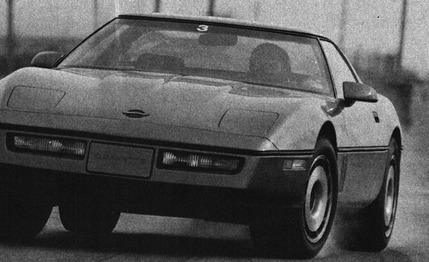
 First Drive Review
First Drive Review
It's no secret that several of us at Car and Driver were not bowled over by the 1984 Corvette. We applauded the new styling, the high-tech suspension pieces, the vastly improved interior accommodations, the flexible and powerful engine, the racetrack handling capabilities, and Chevrolet's willingness to start from a fairly clean sheet of paper, but several factors kept us from really warming up to the new car.
Our first complaint concerned the squeaks and rattles, which were every bit as pervasive as those in the old car. We also felt that the chassis was more nervous and twitchy than we would prefer in a car with such high cornering and braking limits. Another irritant was the four-speed automatic transmission, which is easily confused and never seems to be in the right gear for quick driving. Finally, none of our staff could stand the ride, particularly with the optional Z51 package; it seemed to delight in bouncing the occupants between the seat and the roof panel.
Naturally, Chevrolet was loath to acknowledge these shortcomings publicly, but, behind the scenes, work was proceeding on several fronts to correct many built-in problems. Some solutions came in the form of options unavailable on the first run of cars; others were simply engineering improvements aimed at both major and minor trouble areas.
In the summer of 1983, Bilstein shock absorbers were fitted to help resist the Z51 suspension's tendency to pogo-stick over big bumps. A more subtle change was improvement to certain fasteners that hold the electric mirrors together; these modifications reduced the mirrors' annoying habit of shifting from their desired position every time a door was slammed. An engine-oil cooler and a transparent acrylic roof panel hit the options list about the same time.
Last December, cast-iron and rubber dampers were added to the differential's aluminum subframe to attenuate the transmission of rear-axle gear noise into the body. The overdrive-equipped manual gearbox also entered production in December, giving Corvette customers a useful alternative to the unsatisfying automatic.
A further reduction in gear whine was made in February of this year when the cut of the teeth on the ring and pinion gears was improved. Simultaneously, a 3.31:1 axle ratio was added to the options list. In March, a brace was added to the alternator bracket to stiffen the assembly and reduce its vibrations. Brake squeal was also reduced by changing the brake rotors to an iron material with greater internal damping, and by using a honing rather than a cutting process to improve their surface finish. In April, the door-hinge-bushing material was changed from brass to sintered iron for longer life, and a lightweight locking lug nut was introduced to minimize its effect on wheel balance. Pointed ends were added to the bolts that secure the removable roof panel to make them easier to thread into their blind holes. Another roof-panel-related change was the addition of anti-rattle bumpers to the panel's storage shelf in the Corvette's trunk area.
Oddly enough, this last modification is the only squeak-and-rattle measure that Chevrolet is willing to acknowledge for print. We're surprised, because current production cars are much better in this respect than the early ones we sampled. For example, the Corvette we borrowed for last month's "Best-Handling American Car" evaluation came without the annoying squeak in the center of the instrument panel and many other rattles that had plagued earlier cars. Chevrolet's explanation was that these improvements came about through numerous changes in material specifications and assembly procedures that are too minor to document. They may be minor to Chevrolet, but they account for a substantial improvement in the Corvette's perceived quality.